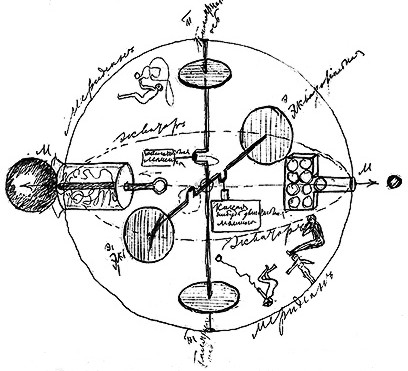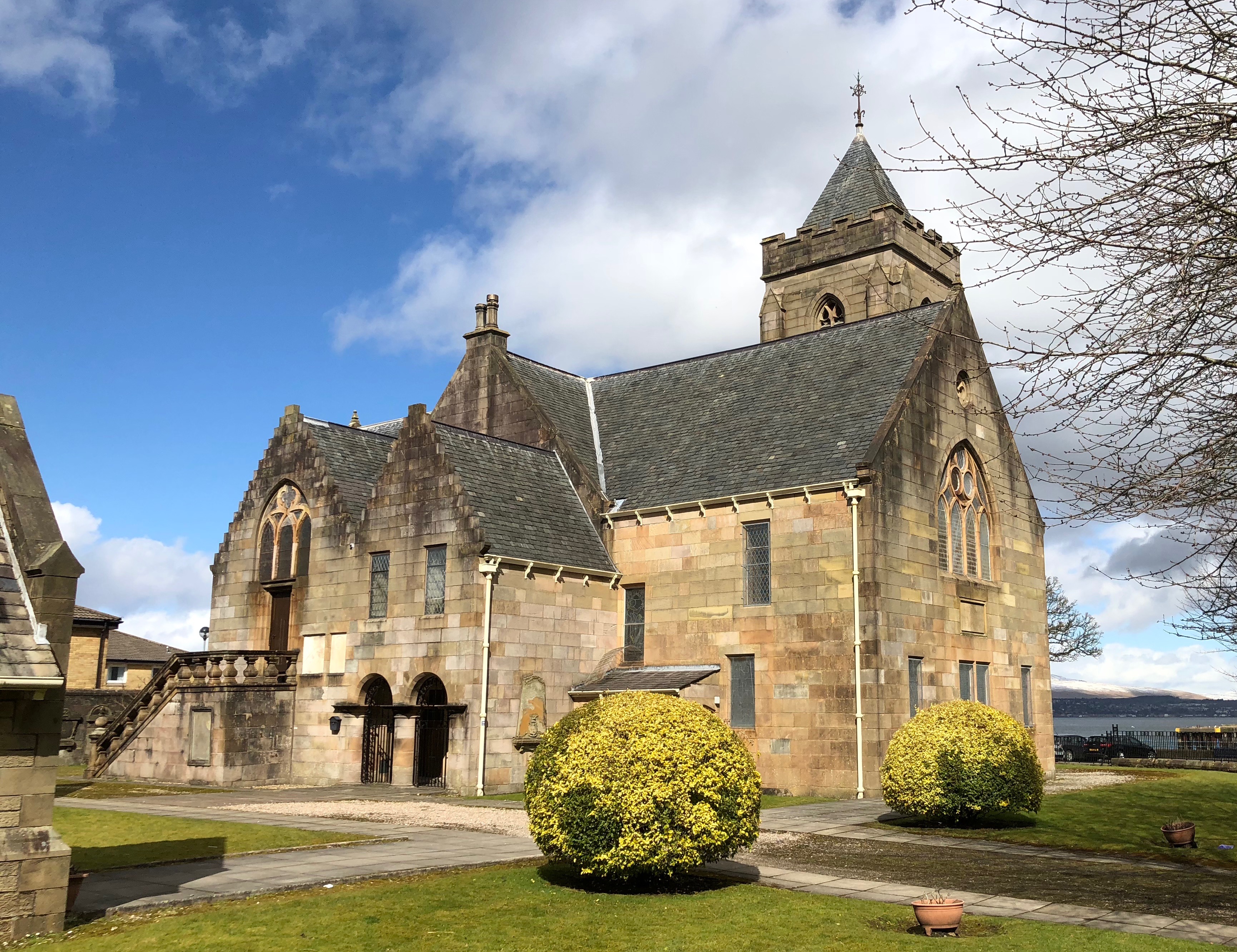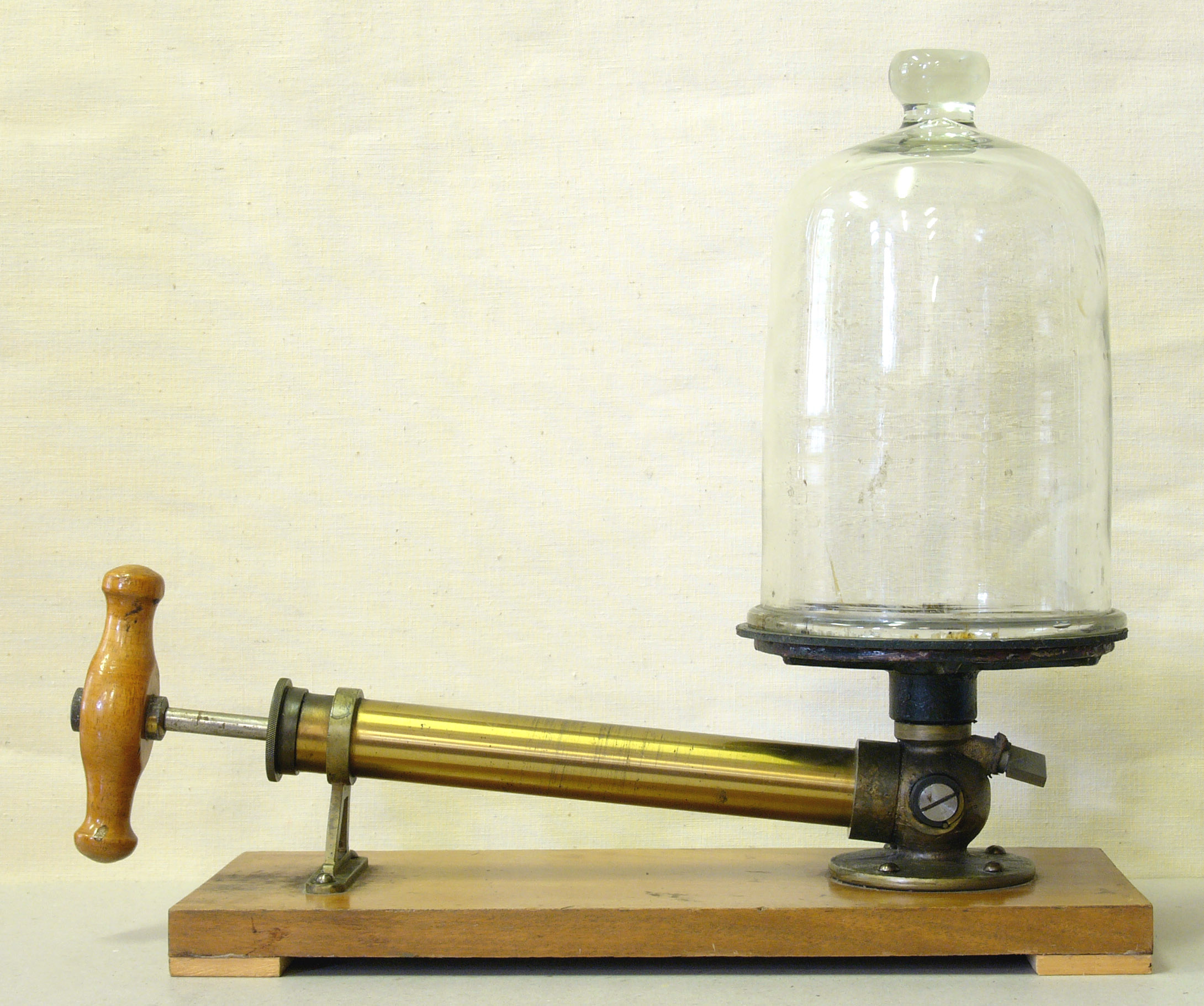|
William Leitch (scientist)
William Leitch (20 May 1814 – 9 May 1864) was a Scottish astronomer, naturalist and mathematician, and a minister of the Church of Scotland. Leitch studied mathematics and science at the University of Glasgow, and moved to Canada in 1860 to take the post of Principal (academia), principal at Queen's University at Kingston, Queen's University. Space historian Robert Godwin published in October 2015 his discovery that Leitch gave the first modern scientific explanation of the potential for space exploration using rockets (1861). Leitch was said to be "a distinguished astronomer, naturalist and mathematician", and his proposal for rocket spaceflight came four decades prior to more well-known proposals by Konstantin Tsiolkovsky (1903), Robert Esnault-Pelterie (1913), Robert H. Goddard (1914), and Hermann Oberth (1923). Leitch's rocket spaceflight description was first provided in his 1861 essay "A Journey Through Space", which was later published in his book ''God's Glory in the He ... [...More Info...] [...Related Items...] OR: [Wikipedia] [Google] [Baidu] |
Rothesay, Bute
Rothesay ( ; ) is the principal town on the Isle of Bute, in the subdivisions of Scotland, council area of Argyll and Bute, Scotland. It lies along the coast of the Firth of Clyde. It can be reached by a Caledonian MacBrayne Sea Road to Rothesay, ferry from Wemyss Bay, which also offers an onward Rail transport, rail link to Glasgow Central railway station, Glasgow Central Station. At the centre of the town is the 13th-century ruin Rothesay Castle, unique in Scotland for its circular plan. Etymology In modern Scottish Gaelic, Rothesay is known as , meaning 'town of Bute'. The English language, English-language name, which was written as ''Rothersay'' in 1321, ''Rosay'' around 1400, and ''Rothissaye'' around 1500, originally referred to the castle. Since the castle was surrounded by a moat connected to the sea, the name may have originally meant 'Rother's Isle' (the Old Norse suffix means "isle"), or it may be an alteration of the Gaelic word , meaning 'fort'. History The o ... [...More Info...] [...Related Items...] OR: [Wikipedia] [Google] [Baidu] |
Konstantin Tsiolkovsky
Konstantin Eduardovich Tsiolkovsky (; rus, Константин Эдуардович Циолковский, p=kənstɐnʲˈtʲin ɪdʊˈardəvʲɪtɕ tsɨɐlˈkofskʲɪj, a=Ru-Konstantin Tsiolkovsky.oga; – 19 September 1935) was a Russian rocket scientist who pioneered astronautics. Along with Hermann Oberth and Robert H. Goddard, he is one of the pioneers of space flight and the founding father of modern rocketry and astronautics. His works later inspired Wernher von Braun and leading Soviet rocket engineering, rocket engineers Sergei Korolev and Valentin Glushko, who contributed to the success of the Soviet space program. Tsiolkovsky spent most of his life in a log house on the outskirts of Kaluga, about southwest of Moscow. A recluse by nature, his unusual habits made him seem bizarre to his fellow townsfolk. Early life Tsiolkovsky was born in (now in Spassky District, Ryazan Oblast), in the Russian Empire, to a middle-class family. His father, Makary Edward Er ... [...More Info...] [...Related Items...] OR: [Wikipedia] [Google] [Baidu] |
Disruption Of 1843
The Disruption of 1843, also known as the Great Disruption, was a schism in 1843 in which 450 evangelical ministers broke away from the Church of Scotland to form the Free Church of Scotland. The main conflict was over whether the Church of Scotland or the British Government had the power to control clerical positions and benefits. The Disruption came at the end of a bitter conflict within the Church of Scotland, and had major effects in the church and upon Scottish civic life. The patronage issue "The Church of Scotland was recognised by Acts of the Parliament as the national church of the Scottish people". Particularly under John Knox and later Andrew Melville, the Church of Scotland had always claimed an inherent right to exercise independent spiritual jurisdiction over its own affairs. To some extent, this right was recognised by the Claim of Right of 1689, which ended royal and parliamentary interference in the order and worship of the church. It was ratified by the A ... [...More Info...] [...Related Items...] OR: [Wikipedia] [Google] [Baidu] |
Church Of Scotland
The Church of Scotland (CoS; ; ) is a Presbyterian denomination of Christianity that holds the status of the national church in Scotland. It is one of the country's largest, having 245,000 members in 2024 and 259,200 members in 2023. While membership in the church has declined significantly in recent decades (in 1982 it had nearly 920,000 members), the government Scottish Household Survey found that 20% of the Scottish population, or over one million people, identified the Church of Scotland as their religious identity in 2019. In the 2022 census, 20.4% of the Scottish population, or 1,108,796 adherents, identified the Church of Scotland as their religious identity. The Church of Scotland's governing system is Presbyterian polity, presbyterian in its approach, therefore, no one individual or group within the church has more or less influence over church matters. There is no one person who acts as the head of faith, as the church believes that role is the "Lord God's". As a pro ... [...More Info...] [...Related Items...] OR: [Wikipedia] [Google] [Baidu] |
John Pringle Nichol
John Pringle Nichol Fellow of the Royal Society of Edinburgh, FRSE FRAS (13 January 1804 – 19 September 1859) was a Scotland, Scottish educator, phrenologist, astronomer and economist who did much to popularise astronomy in a manner that appealed to nineteenth century tastes. Early life Born at Huntly Hill, near Brechin, Angus, Scotland, Angus, Nichol was the son of a gentleman farmer and was educated at the local grammar school and then studied mathematics and natural philosophy (physics) at King's College, Aberdeen, King's College, University of Aberdeen. He then changed to study divinity. He was licensed as a preacher and became a highly effective communicator, but the impact of phrenological thinking led him to abandon the Church for education. Nichol held a number of posts in education and journalism and corresponded with many leading thinkers of the times, including John Stuart Mill. He clearly made some impression in economics as James Mill and Nassau Senior nominated ... [...More Info...] [...Related Items...] OR: [Wikipedia] [Google] [Baidu] |
Observatory
An observatory is a location used for observing terrestrial, marine, or celestial events. Astronomy, climatology/meteorology, geophysics, oceanography and volcanology are examples of disciplines for which observatories have been constructed. The term ''observatoire'' has been used in French since at least 1976 to denote any institution that compiles and presents data on a particular subject (such as public health observatory) or for a particular geographic area (European Audiovisual Observatory). Astronomical observatories Astronomical observatories are mainly divided into four categories: space observatory, space-based, airborne observatory, airborne, ground-based, and underground-based. Historically, ground-based observatories were as simple as containing a mural instrument (for measuring the angle between stars) or Stonehenge (which has some alignments on astronomical phenomena). Ground-based observatories Ground-based observatories, located on the surface of Earth, are u ... [...More Info...] [...Related Items...] OR: [Wikipedia] [Google] [Baidu] |
Master Of Arts (Scotland)
In some Scottish universities, a Master of Arts (MA; , ) is the holder of a degree awarded to undergraduates, usually as a first degree. It follows either a three-year general or four-year ''Honours degree'' course in humanities or social sciences and is awarded by one of several institutions. Chiefly, these are the ancient universities of Scotland — St Andrews, Glasgow, Aberdeen, and Edinburgh. Other institutions which provide undergraduate programmes leading to an MA degree include the University of Dundee, because of its history as a constituent college of the University of St Andrews, or Heriot-Watt University at honours level only. The first two years of a Scottish Master of Arts course consist of ordinary Bachelor level courses; however, after these, students who are accepted to pursue the Honours route will complete more advanced subjects and write a dissertation in their fourth year. Students who choose to do a "general" degree will complete their third year at a ... [...More Info...] [...Related Items...] OR: [Wikipedia] [Google] [Baidu] |
Greenock
Greenock (; ; , ) is a town in Inverclyde, Scotland, located in the west central Lowlands of Scotland. The town is the administrative centre of Inverclyde Council. It is a former burgh within the historic county of Renfrewshire, and forms part of a contiguous urban area with Gourock to the west and Port Glasgow to the east. The 2011 UK Census showed that Greenock had a population of 44,248, a decrease from the 46,861 recorded in the 2001 UK Census. It lies on the south bank of the Clyde at the " Tail of the Bank" where the River Clyde deepens into the Firth of Clyde. History Name Place-name scholar William J. Watson wrote that "Greenock is well known in Gaelic as , dative of , 'a sunny knoll. The Scottish Gaelic place-name is relatively common, with another Greenock near Callander in Menteith (formerly in Perthshire) and yet another at Muirkirk in Kyle, now in East Ayrshire. R. M. Smith in (1921) described the alternative derivation from Common Brittonic *, ... [...More Info...] [...Related Items...] OR: [Wikipedia] [Google] [Baidu] |
Orson Desaix Munn
Orson Desaix Munn (June 11, 1824 – February 28, 1907) was the publisher of ''Scientific American''. Biography Orson Desaix Munn was born on June 11, 1824, in Monson, Massachusetts. He received his education at the academy in his native town, and, deciding on a business career, went to work for a bookstore in Springfield. After two years of this experience, he returned to accept a more important commercial trust in Monson, but soon found his way to New York City. He took over the publishing operations of Munn & Company, a New York patent firm, with Salem Howe Wales and Alfred Ely Beach as editor. With Beach, he bought the six-month-old ''Scientific American'' magazine from Rufus Porter. The purchase price of this property was less than $1,000, and it included a subscription list of 200 names. Porter continued as editor, and the enterprise, placed on a sound business basis, at once proved a success. It was the first popular scientific journal in the United States, and it ... [...More Info...] [...Related Items...] OR: [Wikipedia] [Google] [Baidu] |
Robert Hutchings Goddard
Robert Hutchings Goddard (October 5, 1882 – August 10, 1945) was an American engineer, professor, physicist, and inventor who is credited with creating and building the world's first liquid-fueled rocket, which was successfully launched on March 16, 1926. By 1915 his pioneering work had dramatically improved the efficiency of the solid-fueled rocket, signaling the era of the modern rocket and innovation. He and his team launched 34 rockets between 1926 and 1941, achieving altitudes as high as and speeds as fast as 885 km/h (550 mph). Goddard's work as both theorist and engineer anticipated many of the developments that would make spaceflight possible. He has been called the man who ushered in the Space Age. Two of Goddard's 214 patented inventions, a multi-stage rocket (1914), and a liquid-fuel rocket (1914), were important milestones toward spaceflight. His 1919 monograph ''A Method of Reaching Extreme Altitudes'' is considered one of the classic texts o ... [...More Info...] [...Related Items...] OR: [Wikipedia] [Google] [Baidu] |
Vacuum
A vacuum (: vacuums or vacua) is space devoid of matter. The word is derived from the Latin adjective (neuter ) meaning "vacant" or "void". An approximation to such vacuum is a region with a gaseous pressure much less than atmospheric pressure. Physicists often discuss ideal test results that would occur in a ''perfect'' vacuum, which they sometimes simply call "vacuum" or free space, and use the term partial vacuum to refer to an actual imperfect vacuum as one might have in a laboratory or in space. In engineering and applied physics on the other hand, vacuum refers to any space in which the pressure is considerably lower than atmospheric pressure. The Latin term ''in vacuo'' is used to describe an object that is surrounded by a vacuum. The ''quality'' of a partial vacuum refers to how closely it approaches a perfect vacuum. Other things equal, lower gas pressure means higher-quality vacuum. For example, a typical vacuum cleaner produces enough suction to reduce air pressur ... [...More Info...] [...Related Items...] OR: [Wikipedia] [Google] [Baidu] |
Newton's Laws Of Motion
Newton's laws of motion are three physical laws that describe the relationship between the motion of an object and the forces acting on it. These laws, which provide the basis for Newtonian mechanics, can be paraphrased as follows: # A body remains at rest, or in motion at a constant speed in a straight line, unless it is acted upon by a force. # At any instant of time, the net force on a body is equal to the body's acceleration multiplied by its mass or, equivalently, the rate at which the body's momentum is changing with time. # If two bodies exert forces on each other, these forces have the same magnitude but opposite directions. The three laws of motion were first stated by Isaac Newton in his ''Philosophiæ Naturalis Principia Mathematica'' (''Mathematical Principles of Natural Philosophy''), originally published in 1687. Newton used them to investigate and explain the motion of many physical objects and systems. In the time since Newton, new insights, especially around t ... [...More Info...] [...Related Items...] OR: [Wikipedia] [Google] [Baidu] |








